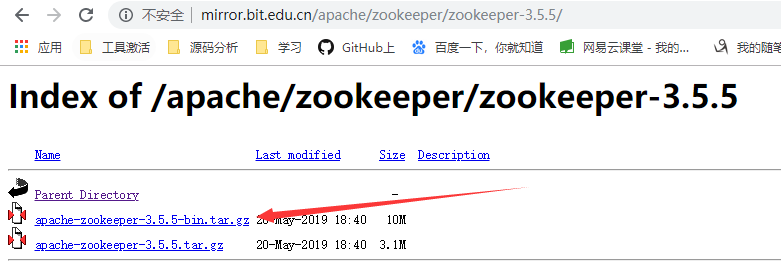When I enrol first and only fingerprint and generate KeyPair the PrivateKey gets invalidated when I use it for the second time. This happens only once. Am I the only one having this issue? Is there something wrong with my code?
I cannot use any other key as I'm using PrivateKey to sign data.
Steps:
- Wipe all fingerprints
- Enrol one fingerprint
- Generate
KeyPair and use FingerprintManager :: authenticate
- During next use of
FingerprintManager :: authenticate PrivateKey gets permanently invalidated. This happens only for the first time
Below the code where I generate the KeyPair
KeyStore keyStore = KeyStore.getInstance("AndroidKeyStore");
keystore.load(null);
KeyPairGenerator generator = KeyPairGenerator.getInstance(KeyProperties.KEY_ALGORITHM_EC, "AndroidKeyStore");
generator.initialize(new KeyGenParameterSpec.Builder("key_name", KeyProperties.PURPOSE_SIGN)
.setDigests(digest) // I have defined digest before
.setSignaturePaddings(paddings) // I have defined paddings before
.setUserAuthenticationRequired(true)
.build());
generator.generateKeyPair();
And here is the code where I invoke fingerprint authentication for data signing:
KeyStore keyStore = KeyStore.getInstance("AndroidKeyStore");
keyStore.load(null);
Signature signature = Signature.getInstance("signing_algorithm");
PrivateKey privateKey = (PrivateKey) keyStore.getKey("key_name", null);
signature.initSign(privateKey); // Here I get KeyPermanentlyInvalidatedException
CryptoObject crypto = new CryptoObject(signature);
FingerprintManager fingerprintManager = context.getSystemService(FingerprintManager.class);
CancellationSignal cancellationSignal = new CancellationSignal();
AuthenticationCallback authenticationCallback = new AuthenticationCallback() {
...
};
fingerprintManager.authenticate(crypto, cancelationSignal, 0, authenticationCallback, null);
i try this link and work perfectly .
First you need to set Minimum sdk look like the Picture

Second set Permission in Mainfest
<uses-permission android:name="android.permission.USE_FINGERPRINT" />
Third
generateKey() function which generates an encryption key which is then stored securely on the device.
cipherInit() function that initializes the cipher that will be used to create the encrypted FingerprintManager.
CryptoObject instance and various other checks before initiating the authentication process which is implemented inside onCreate() method.
FingerPrintActivty.java
import android.Manifest;
import android.annotation.TargetApi;
import android.app.KeyguardManager;
import android.content.pm.PackageManager;
import android.hardware.fingerprint.FingerprintManager;
import android.os.Build;
import android.security.keystore.KeyGenParameterSpec;
import android.security.keystore.KeyPermanentlyInvalidatedException;
import android.security.keystore.KeyProperties;
import android.support.v4.app.ActivityCompat;
import android.support.v7.app.AppCompatActivity;
import android.os.Bundle;
import android.widget.TextView;
import java.io.IOException;
import java.security.InvalidAlgorithmParameterException;
import java.security.InvalidKeyException;
import java.security.KeyStore;
import java.security.KeyStoreException;
import java.security.NoSuchAlgorithmException;
import java.security.NoSuchProviderException;
import java.security.UnrecoverableKeyException;
import java.security.cert.CertificateException;
import javax.crypto.Cipher;
import javax.crypto.KeyGenerator;
import javax.crypto.NoSuchPaddingException;
import javax.crypto.SecretKey;
public class FingerprintActivity extends AppCompatActivity {
private KeyStore keyStore;
// Variable used for storing the key in the Android Keystore container
private static final String KEY_NAME = "androidHive";
private Cipher cipher;
private TextView textView;
@Override
protected void onCreate(Bundle savedInstanceState) {
super.onCreate(savedInstanceState);
setContentView(R.layout.activity_fingerprint);
// Initializing both Android Keyguard Manager and Fingerprint Manager
KeyguardManager keyguardManager = (KeyguardManager) getSystemService(KEYGUARD_SERVICE);
FingerprintManager fingerprintManager = (FingerprintManager) getSystemService(FINGERPRINT_SERVICE);
textView = (TextView) findViewById(R.id.errorText);
// Check whether the device has a Fingerprint sensor.
if(!fingerprintManager.isHardwareDetected()){
/**
* An error message will be displayed if the device does not contain the fingerprint hardware.
* However if you plan to implement a default authentication method,
* you can redirect the user to a default authentication activity from here.
* Example:
* Intent intent = new Intent(this, DefaultAuthenticationActivity.class);
* startActivity(intent);
*/
textView.setText("Your Device does not have a Fingerprint Sensor");
}else {
// Checks whether fingerprint permission is set on manifest
if (ActivityCompat.checkSelfPermission(this, Manifest.permission.USE_FINGERPRINT) != PackageManager.PERMISSION_GRANTED) {
textView.setText("Fingerprint authentication permission not enabled");
}else{
// Check whether at least one fingerprint is registered
if (!fingerprintManager.hasEnrolledFingerprints()) {
textView.setText("Register at least one fingerprint in Settings");
}else{
// Checks whether lock screen security is enabled or not
if (!keyguardManager.isKeyguardSecure()) {
textView.setText("Lock screen security not enabled in Settings");
}else{
generateKey();
if (cipherInit()) {
FingerprintManager.CryptoObject cryptoObject = new FingerprintManager.CryptoObject(cipher);
FingerprintHandler helper = new FingerprintHandler(this);
helper.startAuth(fingerprintManager, cryptoObject);
}
}
}
}
}
}
@TargetApi(Build.VERSION_CODES.M)
protected void generateKey() {
try {
keyStore = KeyStore.getInstance("AndroidKeyStore");
} catch (Exception e) {
e.printStackTrace();
}
KeyGenerator keyGenerator;
try {
keyGenerator = KeyGenerator.getInstance(KeyProperties.KEY_ALGORITHM_AES, "AndroidKeyStore");
} catch (NoSuchAlgorithmException | NoSuchProviderException e) {
throw new RuntimeException("Failed to get KeyGenerator instance", e);
}
try {
keyStore.load(null);
keyGenerator.init(new
KeyGenParameterSpec.Builder(KEY_NAME,
KeyProperties.PURPOSE_ENCRYPT |
KeyProperties.PURPOSE_DECRYPT)
.setBlockModes(KeyProperties.BLOCK_MODE_CBC)
.setUserAuthenticationRequired(true)
.setEncryptionPaddings(
KeyProperties.ENCRYPTION_PADDING_PKCS7)
.build());
keyGenerator.generateKey();
} catch (NoSuchAlgorithmException |
InvalidAlgorithmParameterException
| CertificateException | IOException e) {
throw new RuntimeException(e);
}
}
@TargetApi(Build.VERSION_CODES.M)
public boolean cipherInit() {
try {
cipher = Cipher.getInstance(KeyProperties.KEY_ALGORITHM_AES + "/" + KeyProperties.BLOCK_MODE_CBC + "/" + KeyProperties.ENCRYPTION_PADDING_PKCS7);
} catch (NoSuchAlgorithmException | NoSuchPaddingException e) {
throw new RuntimeException("Failed to get Cipher", e);
}
try {
keyStore.load(null);
SecretKey key = (SecretKey) keyStore.getKey(KEY_NAME,
null);
cipher.init(Cipher.ENCRYPT_MODE, key);
return true;
} catch (KeyPermanentlyInvalidatedException e) {
return false;
} catch (KeyStoreException | CertificateException | UnrecoverableKeyException | IOException | NoSuchAlgorithmException | InvalidKeyException e) {
throw new RuntimeException("Failed to init Cipher", e);
}
}
}
FingerprintAuthenticationHandler.Class
import android.Manifest;
import android.app.Activity;
import android.content.Context;
import android.content.pm.PackageManager;
import android.hardware.fingerprint.FingerprintManager;
import android.os.CancellationSignal;
import android.support.v4.app.ActivityCompat;
import android.support.v4.content.ContextCompat;
import android.widget.TextView;
/**
* Created by whit3hawks on 11/16/16.
*/
public class FingerprintHandler extends FingerprintManager.AuthenticationCallback {
private Context context;
// Constructor
public FingerprintHandler(Context mContext) {
context = mContext;
}
public void startAuth(FingerprintManager manager, FingerprintManager.CryptoObject cryptoObject) {
CancellationSignal cancellationSignal = new CancellationSignal();
if (ActivityCompat.checkSelfPermission(context, Manifest.permission.USE_FINGERPRINT) != PackageManager.PERMISSION_GRANTED) {
return;
}
manager.authenticate(cryptoObject, cancellationSignal, 0, this, null);
}
@Override
public void onAuthenticationError(int errMsgId, CharSequence errString) {
this.update("Fingerprint Authentication error\n" + errString, false);
}
@Override
public void onAuthenticationHelp(int helpMsgId, CharSequence helpString) {
this.update("Fingerprint Authentication help\n" + helpString, false);
}
@Override
public void onAuthenticationFailed() {
this.update("Fingerprint Authentication failed.", false);
}
@Override
public void onAuthenticationSucceeded(FingerprintManager.AuthenticationResult result) {
this.update("Fingerprint Authentication succeeded.", true);
}
public void update(String e, Boolean success){
TextView textView = (TextView) ((Activity)context).findViewById(R.id.errorText);
textView.setText(e);
if(success){
textView.setTextColor(ContextCompat.getColor(context,R.color.colorPrimaryDark));
}
}
}
Hope it help.
you can see this one on github: hope it will help you : Confirm Credentials





